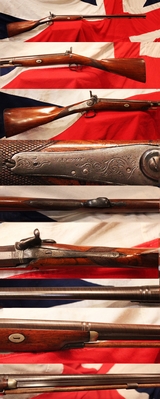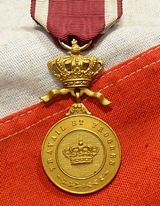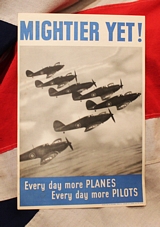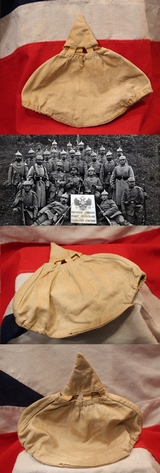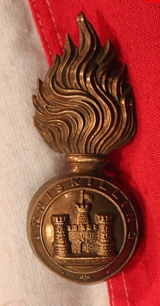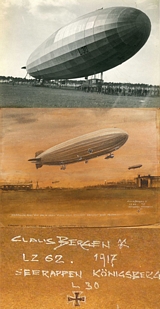19th Century Damascus Twist Barrelled Sporting Gun By Manton of London
Back action lock bearing Manton's name and decorative pattern engraving. It has a hook breech with double platinum lining and very attractive fine Damascus browning, walnut half stocked with steel furniture bearing further overall engraving. Joseph Manton (6 June 1766 ? 29 June 1835) was a British gunsmith who innovated in sport shooting, improved the quality of weapons and paved the way to the modern artillery shell. Joseph was also a sports shooter in his own right and a friend of Colonel Peter Hawker. There were two Manton brothers, John was the elder and Joseph the younger. John Manton was born in 1752 and after his apprenticeship, set up in London in Piccadilly.
Manton began producing percussion guns in 1825 and Manton himself died in 1834, leaving the business in the hands of his son. Some of Manton's weapons are considered the finest of the flintlock age. They can fetch more at auction than Holland & Holland's shotguns. His workforce included James Purdey (who went on to found Purdey's), Thomas Boss, William Greener and Charles Lancaster. These four all went on to establish major firms of gun makers, which continue to this day. The true English Damascus barrel is prepared from three rods, twisted as described and put together as shown in the twisted riband, and is known technically as three-iron Damascus ; the silver-steel Damascus is similarly made, but of different metal piled in a different order. The rods having been twisted, and the required number welded together, they are sent to the iron-mill and rolled at a red heat into ribands, which have both edges bevelled the same way. There are usually two ribands required for each barrel, one riband or strip to form the breech-end, and another, slightly thinner, to form the fore, or muzzle, part of the barrel. Upon receiving the ribands of twisted iron, the welder first proceeds to twist them into a spiral form. This is done upon a machine of simple construction, consisting simply of two iron bars, one fixed and the other loose ; in the latter there is a notch or slot to receive one end of the riband. When inserted, the bar is turned round by a winch-handle. The fixed bar prevents the riband from going round, so that it is bent and twisted over the movable rod like the pieces of leather round a whip-stock. The loose bar is removed, the spiral taken from it, and the same process repeated with another riband. The ribands are usually twisted cold, but the breech-ends, if heavy, have to be brought to a red heat before it is possible to twist them, no cogs being used. When very heavy barrels are required, three ribands are used; one for the breech-end, one for the centre, and one for the muzzle-piece. The ends of the ribands, after being twisted into spirals, are drawn out taper and coiled round with the spiral until the extremity is lost, as shown in the representation of a coiled breech-piece of Damascus iron. The coiled riband is next heated, a steel mandrel inserted in the muzzle end, and the coil is welded by hammering. Three men are required one to hold and turn the coil upon the grooved anvil, and two to strike. The foreman, or the one who holds the coil, has also a small hammer with which he strikes the coil, to show the others in which place to strike. When taken from the fire the coil is first beaten upon an iron plate fixed in the floor, and the end opened upon a swage, or the pene of the anvil, to admit of the mandrel being inserted. When the muzzle or fore-coil has been heated, jumped up, and hammered until thoroughly welded, the breech-end or coil, usually about six inches long, is joined to it. The breech-coil is first welded in the same manner, and a piece is cut out of each coil; the two ribands are welded together and the two coils are joined into one, and form a barrel. The two coils being joined, and all the welds made perfect, the barrels are heated, and the surplus metal removed with a float; the barrels are then hammered until they are black or nearly cold, which finishes the process. This hammering greatly increases the density and tenacity of the metal, and the wear of the barrel depends in a great measure upon its being properly performed. A very nice and tight action and overall in nice condition for age. A very small piece of wood lacking from the breech tang area. As with all our antique guns no license is required as they are all unrestricted antique collectables read more
975.00 GBP
A Beautiful & Very Fine Quality Gilt Early Belgian Order of the Crown, Gold Medal, For The Liberation of Belgium From the Nazi Occupation
In gilt bronze and excellent condition. The Order may also be bestowed to foreign nationals and is frequently awarded to military and diplomatic personnel of other countries stationed in (or providing support to) Belgium. During the Second World War, the Order of the Crown was extensively authorized for award to Allied military personnel who had helped to liberate Belgium from the occupation forces of Nazi Germany.
The Order of the Crown is awarded by royal decree.
The Order was established on October 15, 1897 by King Leopold II in his capacity as ruler of the Congo Free State. The order was first intended to recognize heroic deeds and distinguished service achieved for service in the Congo Free State. In 1908, the Order of the Crown was made a national honour of Belgium, junior to the Order of Leopold.
read more
95.00 GBP
A Most Scarce Graf Zeppelin Airship LZ127: Polar flight 1931 -Silver Medal in 990 Silver
A most rare piece, but remarkably we acquired this fine example [in near mint frosted finish] thanks to another example [but in original near mint bright polish] that we sold only two weeks ago. That past medal was spotted by this rare medal's owner on our website, and they offered it to us. It is only the second of its type of this rare medal we have had in over 15 years. Minted in 990 fine silver, in overall excellent condition.
On July 24, 1931, the airship "Graf Zeppelin" took off from Friedrichshafen for the then sensational polar or Antarctic voyage. The route led via Friedrichshafen, Berlin-Staaken, to Leningrad, Franz-Josef-Land (Arctic), back via Berlin-Tempelhof to Friedrichshafen. The impressive driving distance was 13,308 km.
The idea of using airships to explore the Arctic had been a dream of Count Zeppelin 20 years earlier, but was put on hold during World War I. Roald Amundsen had taken a Dornier Wal flying boat to the Arctic in July 1925, and commented that an airship would have been a better vehicle for the journey. Arctic exploration was one reason used to justify the restoration of Germany's right to build airships. Eckener had taken Graf Zeppelin on a three-day trip to Norway and Spitsbergen in July 1930 to test its performance in the region. This was followed by a three-day flight to Iceland.Both trips were completed without technical problems.
The International Society for the Exploration of the Arctic by Air (Aeroarctic) was interested in getting Eckener involved in a polar flight. Fridtjof Nansen, the president of Aeroarctic, died suddenly, and Eckener was offered the presidency. Overwhelmed by the offer, he consulted the German Chancellor, Heinrich Brüning, who was unable to help him.Wilkins then suggested a polar rendezvous. The initial plan was to meet the Nautilus (SS-73), the submarine in which Wilkins was attempting a trip under the polar ice. The submarine suffered technical problems and was later scuttled off Bergen, Norway.
The polar flight (Polarfahrt 1931) lasted from 24 to 31 July 1931. Graf Zeppelin carried emergency equipment including tents, inflatable boats, fishing equipment, petrol stoves, and 4,100 kg (9,000 lb) of food. To save weight, luxury fittings were removed and the beds were replaced by lightweight bunks. The ship rendezvoused with the Soviet icebreaker Malygin, which had the Italian polar explorer Umberto Nobile aboard. It exchanged 120 kg (260 lb) of souvenir mail with the airship, which Eckener landed on the Arctic Ocean, using canvas buckets of sea water to descend to the surface, flotation aids, and a sea anchor to hold position. Fifty thousand cards and letters, weighing 300 kg (660 lb), were flown. The costs of the expedition were met largely by the sale of special postage stamps issued by Germany and the Soviet Union to frank the mail carried on the flight.
The writer Arthur Koestler was one of two journalists on board, along with a multinational team of scientists led by the Russian Professor Samoilowich, who measured the Earth's magnetic field, and a Russian radio operator, Ernst Krenkel.The expedition photographed and mapped Franz Josef Land accurately for the first time, and came within 910 kilometres (570 mi; 490 nmi) of the North Pole. It deployed three early radiosondes over the Arctic to collect meteorological data from the upper atmosphere; they were released through a specially built large hatch in the keel, with a weight that dropped away, allowing them to climb. LZ-127 and boat from the Soviet icebreaker Malygin at Franz-Josef Land
A rather dramatic scene of the U-LZ127 GRAF ZEPPELIN loading or unloading passengers being ferried between it an a large steamer during its July 1931 Arctic voyage.by Alexander Kircher The painting sold in 2005 at Cowan's Auction, Cincinnati in for $19,550 read more
325.00 GBP
A Most Fine & Beautiful Katana Signed Sukesada of Bizen Dated 1560
Signed Bizen kuni ju Osafune Sukesada. One of the Sukesada, Bizen smiths. A very nice Koto blade, that has seen battle, with fine mounts and, most unusually, a very interestingly, embossed Dutch leather, called goudleer, bound tsuka, with cloisonne enamel menuki. Embossed Dutch leather [goudleer] was imported to Japan by the Dutch and Portuguese in the 16th century and was highly prized as screens and other decorative works of art. We have also seen, although most rarely, other items decorated with this distinctive Dutch leatherwork such as samurai purses and saya coverings. The embossing on the leather are various insects, highly popular in samurai fittings d?cor. The fushi tsuka mount is very fine, signed by the maker, and decorated with flowers and gold buds. Harima, Mimasaka and Bizen provinces were prospering under the protection of the Akamatsu family. Above all, Bizen province turned out a great many talented swordsmiths. A large number of swords were made there in the late Muromachi period not only supplying the demand of the Age of Provincial Wars in Japan but also as an important exporting item to the Ming dynasty in China. At the onset of the decline of the Ashikaga shogunate in 1565 ad., and Yoshiteru's assassination the shogunate of Yoshiteru was filled by his two-year old son, Yoshiaki. Yoshiteru's brother was the abbot of a Buddhist monastery. He resigned this position and attempted to assume the shogunate. These efforts ultimately failed. The demand for swords began an accent to unimaginable levels. The national unrest and violent civil war did not cease until the successful takeover of the shogunate by Tokugawa Iyeyasu. The "Osafune - Kozori" group was the major supplier of blades for these events. 29 inch blade Tsuba to tip. On just one side of the blade there are combat stress hagire marks near the top section. This blade has certainly seen combat, and is simply ideal for the historical collector of beautiful samurai weaponry of battle, rather than those seeking blade condition perfection. 40 inches long approx overall in saya read more
6450.00 GBP
Mightier Yet! Every Day More Planes Every Day More Pilots Original WW2
Propaganda poster for the British wartime RAF and the mighty Hurricane. Printed for HM Stationary Office by J. Weiner Ltd London WC1. A propaganda information and recruitment poster. The size as were used in the underground trains advertising panels, or the back of black cabs. Britain re-created the World War I Ministry of Information for the duration of World War II to generate propaganda to influence the population towards support for the war effort. A wide range of media was employed aimed at local and overseas audiences. Traditional forms such as newspapers and posters were joined by new media including cinema (film), newsreels and radio. A wide range of themes were addressed, fostering hostility to the enemy, support for allies, and specific pro war projects such as conserving metal and growing vegetables. In 1940 in particular, Winston Churchill made many calls for the British to fight on, and for British units to fight until they died rather than submit. His calls for fight to victory inspired a hardening of public opinion. Determination raised the numbers of the Home Guard and inspired a willingness to fight to the last ditch, in a manner rather similar to Japanese determination, and the slogan "You can always take one with you" was used in the grimmest times of the war. British victories were announced to the public for morale purposes, and broadcast to Germany for purposes of undermining morale.
Even during Dunkirk, an optimistic spin was put on how the soldiers were eager to return.
When the U-boat commander Gunther Prien vanished with his submarine U-47, Churchill personally informed the House of Commons, and radio broadcasts to Germany asked, "Where is Prien?" until Germany was forced to acknowledge his loss.
The turn of the war made BBC's war commentaries much more stirring.
We never normally comment on the investment potential of any collectable, but the potential for all underpriced WW1 and WW2 posters must be incredible, for example the more famed poster, 'Keep Calm and Carry On' can now sell for over £20,000.
Good condition 10 inches x 15 inches read more
395.00 GBP
A Scarce Imperial German WW1, Elite 'Guards' Regiment Pickelhaub Camouflage Cover, In Khaki
Imperial Prussian guards issue. Photo in the gallery of Imperial German troops wearing camo covers on their pickelhaubs, with a captured Russian sign. In 1892, a light brown cloth helmet cover, the M1892 uberzug, became standard issue for all Pickelhauben for manoeuvres and active service. The uberzug was intended to protect the helmet from dirt and reduce its combat visibility, as the brass and silver fittings on the Pickelhaube proved to be highly reflective. Regimental numbers were sewn or stencilled in red (green from August 1914) onto the front of the cover, other than in units of the Prussian Guards, which never carried regimental numbers or other adornments on the uberzug. With exposure to the sun, the uberzug faded into a tan shade. In October 1916 the colour was changed to be feldgrau (field grey), although by that date the plain metal Stahlhelm was standard issue for most troops. All helmets produced for the infantry before and during 1914 were made of leather. As the war progressed, Germany's leather stockpiles dwindled. After extensive imports from South America, particularly Argentina, the German government began producing ersatz Pickelhauben made of other materials. In 1915, some Pickelhauben began to be made from thin sheet steel. However, the German high command needed to produce an even greater number of helmets, leading to the usage of pressurised felt and even paper to construct Pickelhauben. The Pickelhaube was discontinued in 1916.
During the early months of World War I, it was soon discovered that the Pickelhaube did not measure up to the demanding conditions of trench warfare. The leather helmets offered little protection against shell fragments and shrapnel and the conspicuous spike made its wearer a target. These shortcomings, combined with material shortages, led to the introduction of the simplified model 1915 helmet described above, with a detachable spike. In September 1915 it was ordered that the new helmets were to be worn without spikes when in the front line read more
395.00 GBP
A Most Rare Imperial German Elite ‘Gardes du Corps’ Officer’s Cap, In White and Scarlet, The Very Same Type of Cap Worn By Kaiser Willhelm
The most elite regiment of Imperial Germany, with officer's drawn from the imperial Prussian nobility including the Kaiser himself. A dress cap for an officer of the Gardes du Corps (Regiment der Gardes du Corps). In superb condition for age, not faded and crisp scarlet, some natural age use wear to the interior, no moth, with some stiching adrift on one side of the extreme peak corner. In parade dress they wore the most extravagent eagle mounted steel helmet. The Gardes du Corps was the personal bodyguard of the king of Prussia and, after 1871, of the German emperor (in German, the Kaiser). The unit was founded in 1740 by Frederick the Great. Its first commander was Friedrich von Blumenthal, who died unexpectedly in 1745; his brother Hans von Blumenthal, who, with the other officers of the regiment had won the Pour le M?rite in its first action at the battle of Hohenfriedberg, assumed command in 1747. Hans von Blumenthal was badly wounded leading the regiment in a successful cavalry charge in the battle of Lobositz and had to retire from the military. Unlike the rest of the Imperial German Army after German unification in 1871, the Garde du Corps was recruited nationally and was part of the 1st Guards Cavalry Division. The Regiment wore a white cuirassier uniform with certain special distinctions in full dress. These included a red tunic for officers in court dress and a white metal eagle poised as if about to rise from the bronze helmet on which it sat. Other unique features of the regiment's full dress worn until 1914 included a red sleeveless Supraweste (survest) with the star of the Order of the Black Eagle on front and back and the retention of black iron cuirasses edged with red which had been presented by the Russian Tsar in 1814. These last replaced the normal white metal breastplates on certain special occasions. During the First World War, the Garde du Corps served in Belgium, Poland, Latvia and the Ukraine. read more
1150.00 GBP
A Victorian 1881 Inniskilling Fusiliers Busby Helmet Grenade
In October 1899 war broke out between the United Kingdom and the Boer Republics. The 1st Battalion landed at Durban, where they became part of the 5th (Irish) Brigade. The battalion was involved in a series of military reverses at the hands of the Boers that became known as the "Black Week", culminating in defeat at the Battle of Colenso. The unit subsequently took part in the Tugela Campaign before helping relieve Ladysmith in early 1900. The regiment lent its name to "Inniskilling Hill", which was taken by the 5th brigade on 24/25 February 1900. In 1914 the Great War broke out and the 2nd Battalion was first to see action in the Battle of Le Cateau. The 1st Battalion participated in the Landing at Cape Helles on the Gallipoli peninsula in April 1915 with the 29th Division. There were also nine New Army battalions raised seeing service with the 10th (Irish) Division, the 16th (Irish) Division and the 36th (Ulster) Division on the Western Front and at Gallipoli, the Macedonian Campaign and Palestine. read more
85.00 GBP
Meissen Porcelain Round The World Zeppelin Flight Medal
1929 GERMANY. 1929 Graf Zeppelin World Flight Medal. Red Porcelain, 50.7mm. Near mint condition.
Obv. Airship over Eastern
Hemisphere globe, GRAF ZEPPELIN WELT
RUNDFLUG . Rev. Airship over Western Hemisphere globe, FRIEDRICHSHAFEN. TOKIO. LOS ANGELES. LAKEHURST . A classic Zeppelin
issue made by the State Porcelain Factory of Meissen, mintmark crossed swords, Kurschwertern . MEISSEN TABLE MEDAL - GRAF ZEPPELIN "AROUND THE WORLD VOYAGE" - 1929. Meissen was one of the premier makers of tableware and porcelain items in Imperial Germany. The firm is hundreds of years old, and has survived to this day. A large-format table medal that salutes the Graf Zeppelin?s (LZ-127) "Around the World Tour." The tour began in Friedrichshafen, Germany, where the Graf Zeppelin was built, and continued on to Tokyo, Los Angeles, and Lakehurst, NJ (where her sister ship, the Hindenburg, exploded in May 1937) before returning to Germany. It measures 2" in diameter and is chocolate brown. It shows hallmarking for Meissen on both sides.In 1929, the Graf Zeppelin, LZ-127, made a world flight, stopping at Friedrichshafen, Tokyo, and Los Angeles. Although the Graf was not the first aircraft to circle the globe, it took only 21 days, 7 hours, 34 minutes, a new record for round-the-world travel by any means. Furthermore, it carried a full passenger load over much previously uncharted land. read more
235.00 GBP
WW1 Watercolour of LZ 62. By Claus Bergen, Zeppelin L30, Naval Airship Crew
Painted by Luftschiffer Claus Bergen in 1917, who, in our opinion had a very skilled artistic hand. Painted by a German Zeppelin Crew, and owned by a British WW1 POW. Maybe it was given to him by the artist.
Titled at the bottom in German "Zeppelin, flieg, Hilf uns im krieg, Flieg nach England, England wird abgebrannt, Zeppelin, flieg." Translation "Zeppelin, fly,
Help us win the war, Fly against England, England will be burned, Zeppelin, fly"?.Words from a popular Zeppelin propaganda song in Germany during WW1. Original rare German WW1 Zeppelin artwork. Signed Claus Bergen, of the German Navy, Luftschiff Crew, L30 formerly LZ62, dated 1917. Titled and also bearing the name of the Zeppelin forces commander, Peter Strasser. The painting was sent back from Danzig by a British POW who was imprisoned in Germany during WW1. The Zeppelin LZ 62 was the 69th Airship of Count Zeppelin and the 25th Airship for the Imperial Navy , where it was designated L 30 .L 30 was the type ship of the class "R" , the so-called Superzeppeline with two additional motor gondolas with pressure propellers laterally offset below the centre of the fuselage. The hull was now approaching a slender teardrop shape that had both lower air resistances well as increased carrying gas volume ensured. The new type was 20 meters longer than its predecessor, had a significantly larger diameter. The new type had an almost double payload with now 32.5 t. The construction of the larger model with significant changes led to a longer construction period; In the meantime, several Zeppelin shipyards made airships, so that not only did the numbers and identifiers differ, but they also did not exactly represent the order of completion and takeover. LZ 63 to LZ 69 had already been completed before LZ 62. In addition, the Navy decided to give the first "Superzeppelin" the ID L 30 , although she had previously lost only 24 Zeppelins. LZ 62 made its first trip on 28 May 1916 and was put into service as L 30 in July 1916. The first commander of the airship became lieutenant to the See of Buttlar , who had already commanded L 6 and L 11 . The first in the north woods stationed ship was from 21 August from Ahlhorn used from. On January 11, 1917 Lieutenant Lake Friemel new commander, who moved with the ship in early April 1917 to T?nder . There took over on April 20, 1917, the Lieutenant Lake Boedecker the command of L 30 , the airship in early May to Seerappenrelocated near K?nigsberg . There remained the airship until the autumn of 1917 together with L 37 and four army airships, which were used primarily for reconnaissance. The back bears details of commanders of Zeppelins and information of Kapitan-Leutnant Alois Bocker's crew of L33, and also of a shooting down near Potters Bar [ Kapitan Mathy's L31]. This painting had been owned after its artist by a British POW soldier, and it was sent home as war souvenir from Wurtemberg in early 1919 for a cost of 71/2 pfennigs. Unframed 26cm x 19.5 cm read more
895.00 GBP


